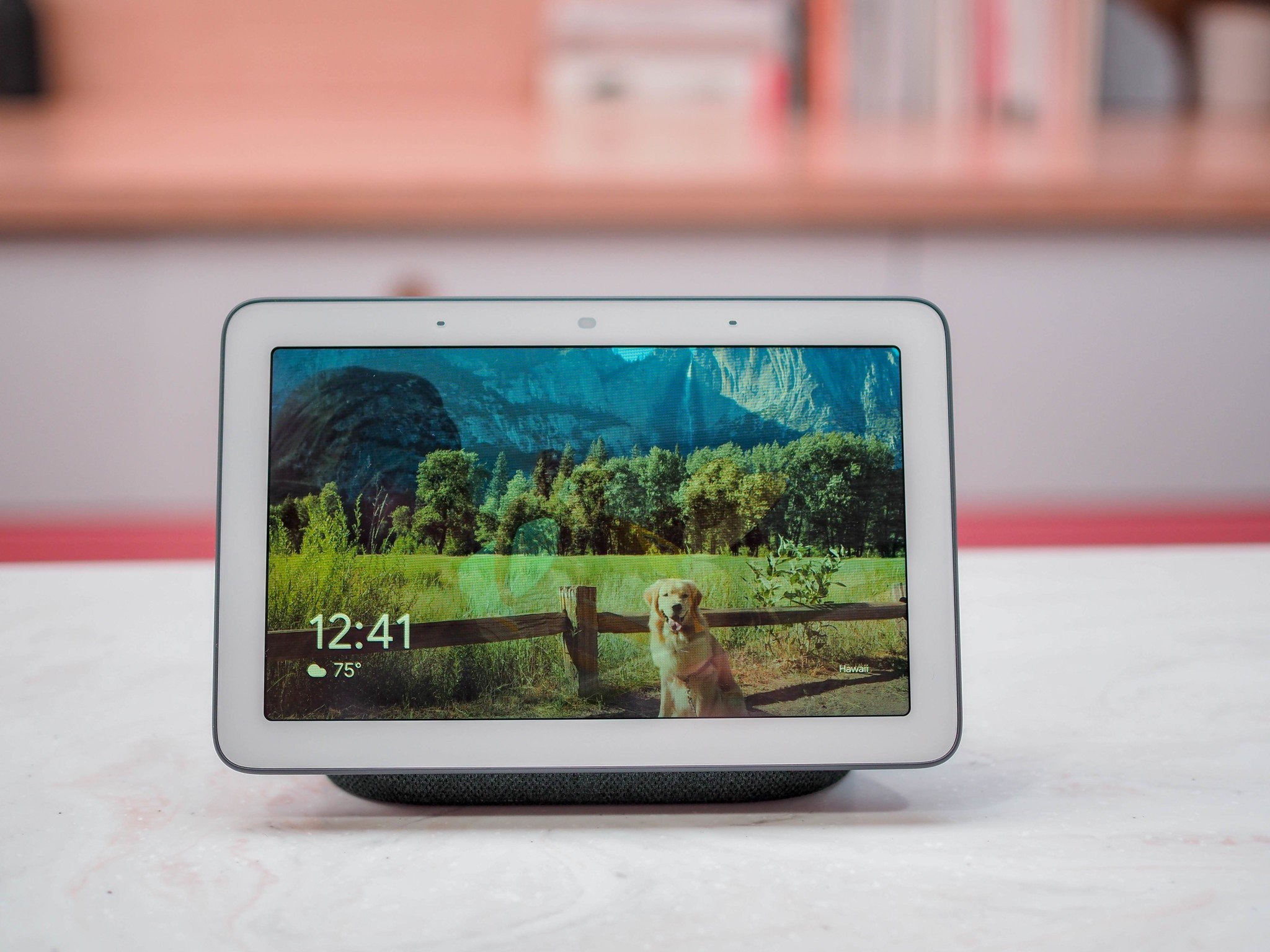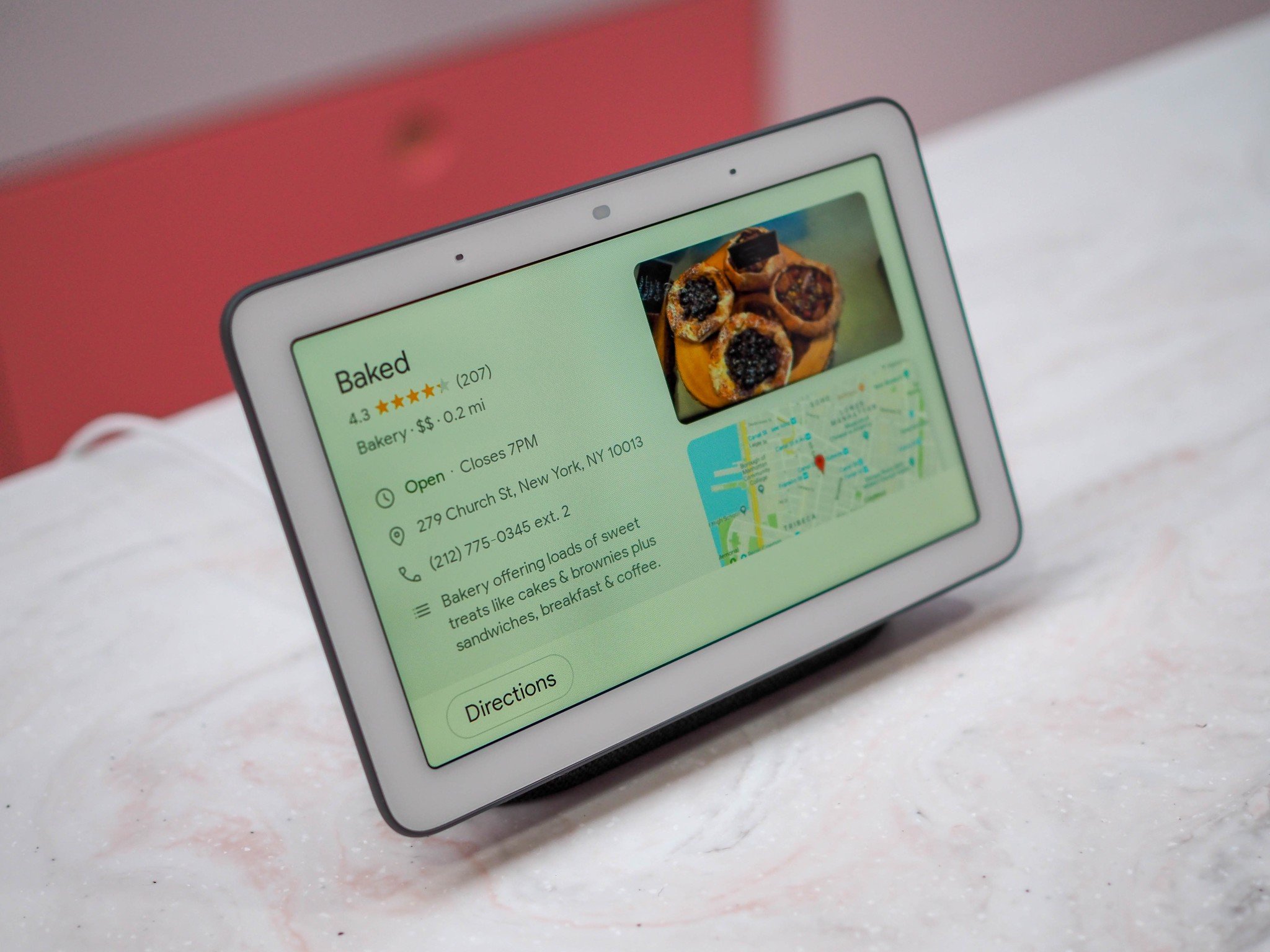No camera, but plenty to look at.
I've been living with a Lenovo Smart Display for around two months now and it's quickly become as indispensable as my coffee maker and frying pans. It sits in my kitchen, in view but not in the way, waiting for me to ask it to play The Daily Podcast or give me the weather forecast. When I am following a new recipe, I tend to bring it up on the Smart Display so I don't have to get my phone's screen grimy. When it's not in use, it cycles through my favorite photos.
In other words, when I think about my Smart Display I think of an appliance, not a gadget. It just fits in with the rest of my kitchen appliances.
The moment I saw Google's new 7-inch Home Hub, which runs the same Android Things OS as Lenovo's larger, more expensive Smart Display, I knew I had to have one. Not for my kitchen — though Google claims it's perfect there, too — but for my nightstand. Where my Amazon Echo Spot currently resides.
See, here's the thing: Google's idea of a smart display is one of compact simplicity, It has a 7-inch screen, the same size as the original Echo Show, but in an improbably tiny shell that makes it look like a Nexus 7 bolted onto a Google Home Mini. In a good way.
Google Home Hub Hardware
The Home Hub is adorable. It's smaller than you think, with a 7-inch HD display buttressed by relatively large bezels, with two microphones and a proximitiy sensor on the top part of the frame. The screen is bright and sharp and is touch-sensitive, which enables the many contextual Google Assistant features available on Android Things.
There is no camera on here, which is by design. Google's Smart Display ecosystem is growing, and all of its partners, from Lenovo to LG to JBL and Sony, have Google Duo-enabled cameras on their units. To keep cost and size down, Google forwent this particular feature, which is interesting given that right now Android Things only supports Google's own video calling service.
Bolted to the screen is a speaker covered in mesh, similar in texture and looks to the Google Home Mini. That's a good thing, because though you won't see much of the back, it helps make the Home Hub friendly and familiar, especially if you're already invested in Google's ecosystem. The rear of the unit has a physical microphone mute toggle and nothing else, which speaks to the focused austerity of this design.
These colors are really nice, and at least one will be perfect for a bedside table, living room shelf, or kitchen counter.
Available in four colors — green, pink, dark grey, and white — the Home Hub is small enough to easily stow away, or keep relatively hidden should you want to just use it as a speaker. And use it as a speaker many will: while I wasn't able to get a sense of its fidelity next to, say, a Google Home, in my brief time with the Home Hub I was impressed by its volume, if not its dynamic range. Don't expect a lot of bass from a speaker this size, but it'll definitely provide sufficient volume to fill a medium-sized room with a podcast or recipe instructions.
Google Home Hub Software
The Home Hub runs Android Things, which is a variant of Android meant for "light touch" or audio-only appliances like this. Relying almost entirely on Google Assistant for context, the Home Hub offers visual accompaniment to most of the queries one would ask a Google Home or the Assistant on a phone. Query the weather and a forecast is displayed on the screen. Start playing a song from Spotify and the artist, album and track are shown, along with the ability to quickly scrub through. Inquire about a recipe and you get step-by-step instructions.
Android things is in its infancy, but it's got a lot of potential.
Android Things on the Home Hub is, to my eyes, identical to what I see every day on my Smart Display, with one major exception: the Home View. It offers an overview of the status of the smart home — from lights to locks to security cameras — with a swipe down from the main screen. While the Home View feature will likely come to other Smart Displays (as well as the Google Home mobile app) with a software update, right now it's a Home Hub exclusive.
Google Home Hub Final Thoughts
At $149, the Home Hub essentially replaces the original Google Home — which is now two years old — in the company's Assistant-powered speaker lineup. Indeed, at $129 it's difficult to justify keeping the original Home unless you're explicitly looking for a more powerful speaker.
That leaves a lineup that looks a bit obscure: at $49, the Google Home Mini answers basic Assistant queries; at $149, the Home Hub gives you a visual representation of Assistant; and at $399, the Home Max delivers floor-crunching bass and room-filling fidelity.
The other interesting question is how it fits in with the rest of the Smart Display ecosystem, where it's the smallest and cheapest option right now, as well as how it competes with Amazon's $129 Echo Spot and $199 Echo Show. I think it offers a pretty compelling value proposition on its own, especially given its diminutive stature, but we're going to have to wait until we get our own unit to judge.
The Google Home Hub is available in the U.S., the UK, and Australia from October 22, and rolls out to other countries in the next few months.




0 Response to "You Can See More: Google Home Hub hands-on: The perfect compact bedside gadget"
Post a Comment